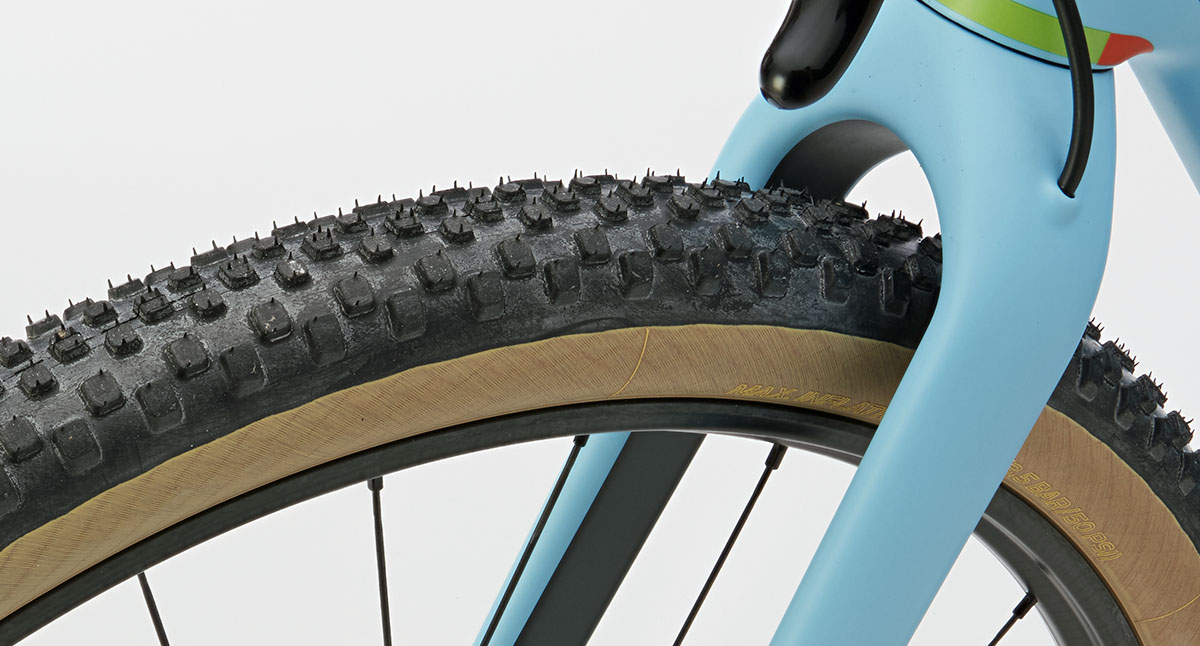Gravel Myths (2): Smaller Knobs Roll Faster?
In part 1 of our series of ‘Gravel Myths,’ we looked at the idea that you don’t want to run ‘too much tire’ for a given course. We found that, when in doubt, it makes sense to choose wider tires: They roll as fast on smooth surfaces, and much faster when the going gets rough.
‘Too much tire’ can also refer to the tread pattern. Most cyclists know that slick, or almost slick, tires are fast. A very fine tread, like the chevrons of Rene Herse all-road tires, actually rolls fastest: It absorbs tiny high-frequency vibrations without ‘activating’ the tire casing.
What about knobs for rough, loose, muddy and snowy conditions? If no knobs are fastest, does that mean that tires with small knobs roll faster than tires with big knobs? Something like a diamond ‘file’ pattern or small knobs that you find on many gravel tires? The surprising answer is ‘No.’ In fact, small knobs roll slower than almost any other tread pattern.
Let’s look at why small knobs make tires slow: Knobs flex and squirm as the tire rolls. Flexing rubber takes energy, and that energy has to come from somewhere: The bike slows down. To make a fast knobby tire, you want to eliminate flex and squirm of the knobs as much as possible. And, paradoxically, that requires large knobs, which are stiffer and thus flex less than small knobs.

To visualize this, let’s look at car tires. Above are the tires used in Formula 1 racing. On the left are three slicks with different rubber hardness (depending on whether a driver wants to optimize wear resistance or cornering grip). On the right are two tires for intermediate and wet conditions.
We’ll focus on the wet-weather tire on the far right. It has tread blocks that are separated by channels to evacuate water. Basically, the wet-weather Formula 1 tire—and the tires on street cars—are knobbies.
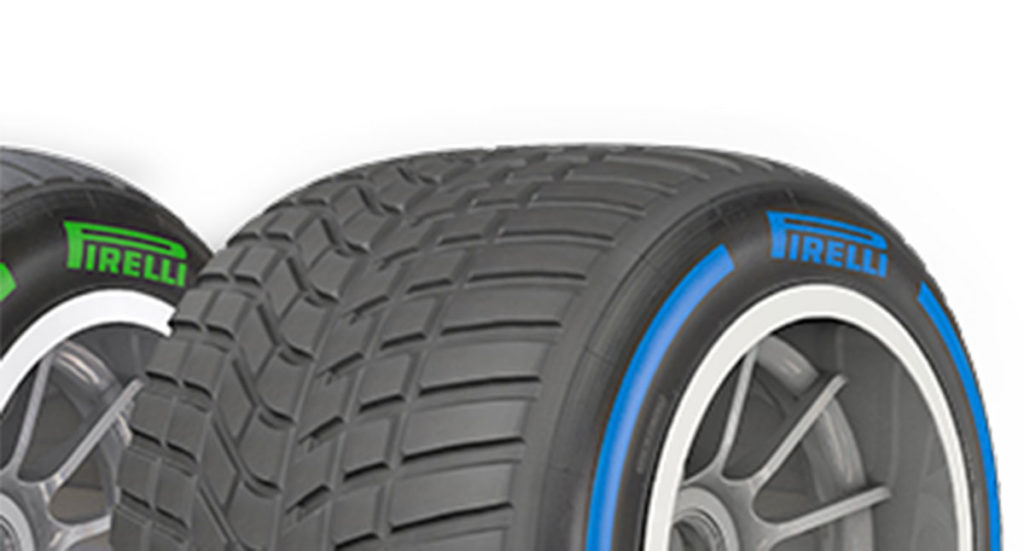
The knobs are large, so they don’t squirm or flex excessively. But Formula 1 race cars have about 1000 horsepower, so there’s going to be a little squirm even with these large knobs. That’s why racers prefer slick tires when conditions are dry. Still, it’s pretty amazing that, in rainy conditions, Formula 1 race cars can put down 1000 horsepower through knobby tires. That’s possible because the knobs are large. Smaller knobs wouldn’t work as well.
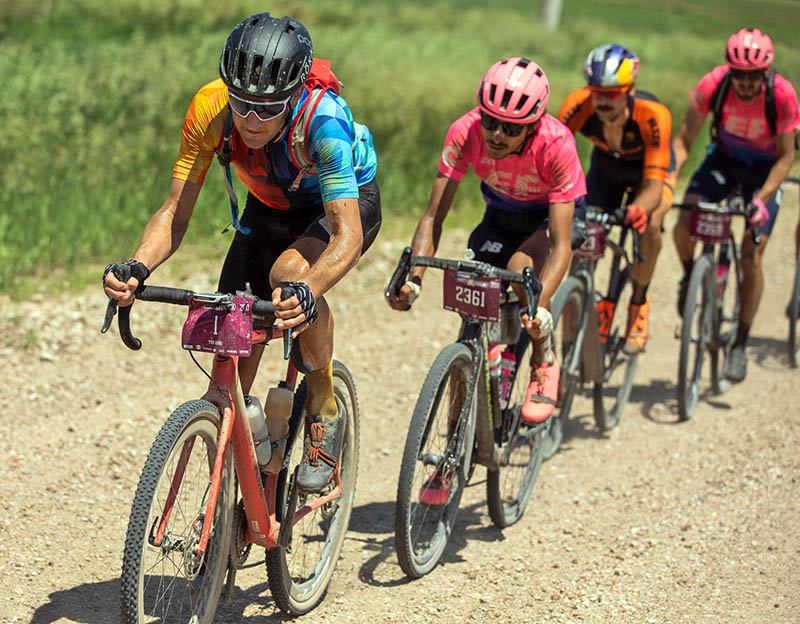
The strongest pro sprinters put out about 2 horsepower. That’s amazingly strong for a human body. Yet it’s only 0.2% of a Formula 1 race car. With that ‘little’ power compared to a race car, the knobs on bicycle tires can be much smaller than those on a Formula 1 tire. But there are limits: If you make the knobs too small, they flex and squirm. Larger knobs are stiffer and thus faster.
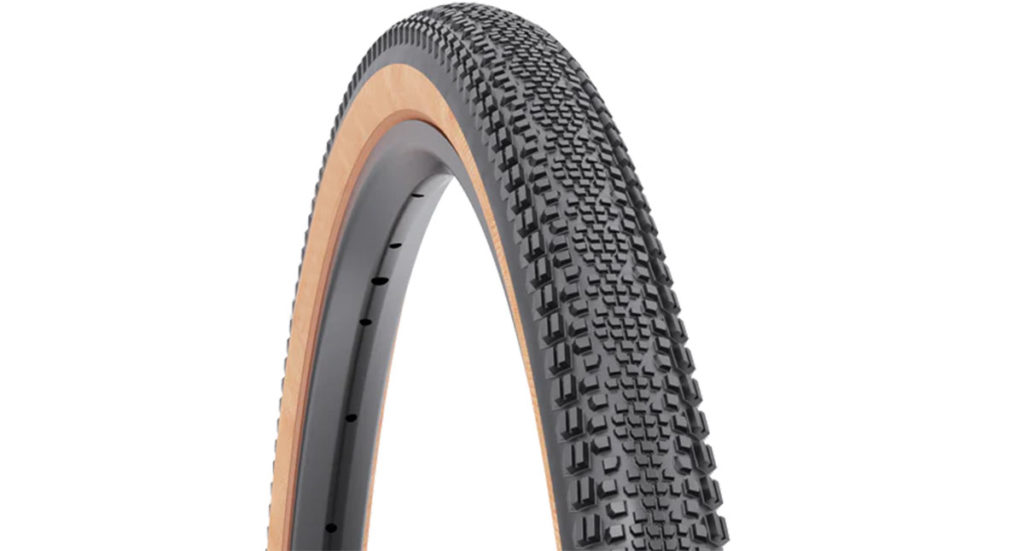
Once you realize this, it seems weird that many tire makers recommend tires with small knobs for dry conditions, when you want a fast-rolling tire above all. It doesn’t make sense. That’s not just a theoretical concern: When we tested these tires on real roads, they were surprisingly slow.
Making the knobs larger would make these tires faster, but that alone isn’t enough. You also want to distribute the knobs so that you always have the same number of knobs supporting the weight of bike and rider. (This also makes for predictable cornering, because you always have the same amount of rubber on the road surface.)
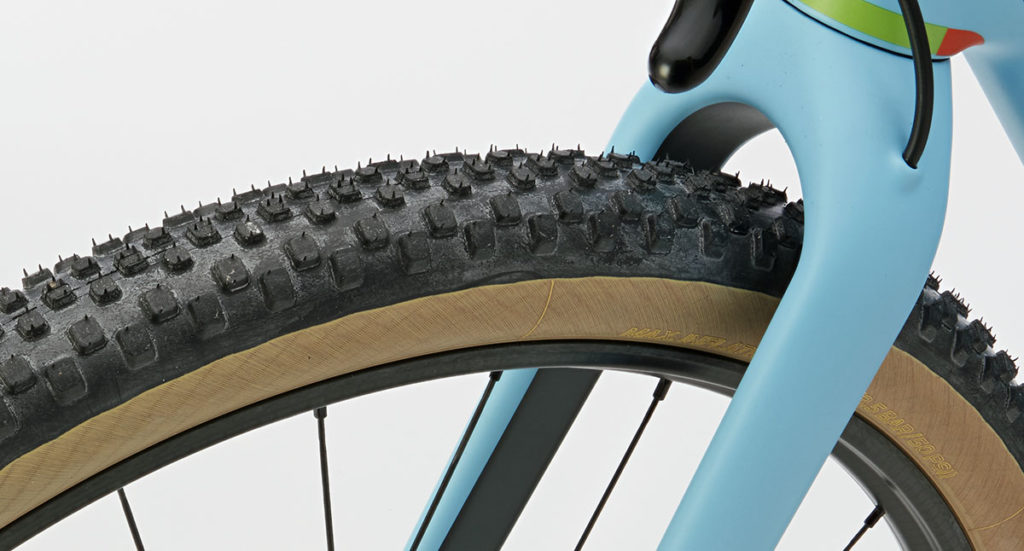
At Rene Herse, we designed our knobbies like wet-weather Formula 1 tires: We took a slick and removed as much material as possible, while still preserving the performancen characteristics of the slick tire. The objective is different—evacuate water for Formula 1; dig into loose surfaces for bicycles—but the idea is the same. And with cyclists’ smaller power output, we could carve away the surface of our slick tire until only knobs remained. And yet the tire still behaves like a slick, at least at power outputs up to 400 watts. That’s enough for most of us—even pro racers rarely dig deeper than that. If we made the knobs smaller, they’d start flexing at just 150 or 200 watts.
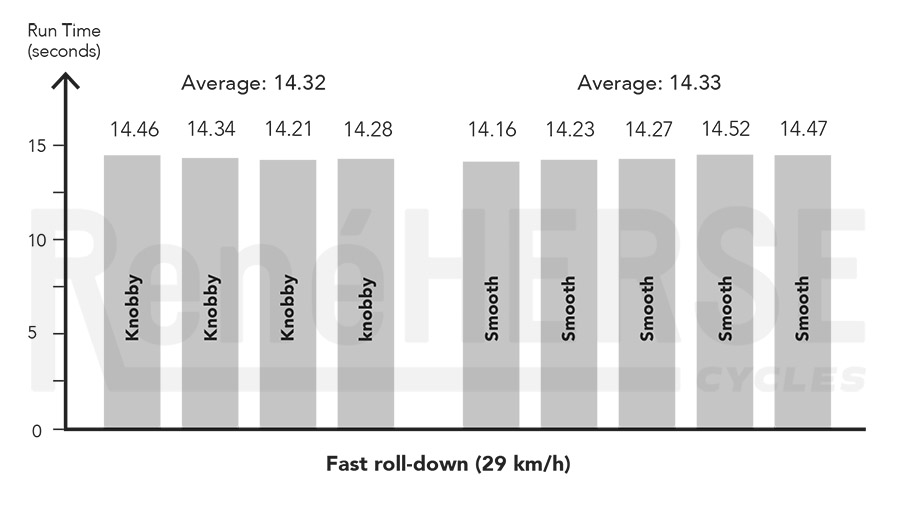
Of course, all the theory in the world doesn’t mean much, unless it’s proven on the road. Above are real-road tests for our 700×42 mm Hurricane Ridge knobbies (left) and our smooth 700×44 mm Snoqualmie Pass tires (right). Both roll at exactly the same speed. (We always run multiple repeats of each test to see how consistent our results are.)
Our knobbies may look burly, but they roll faster than all other knobbies we’ve tested. And they also perform better on loose terrain and in mud, because there’s more ‘negative’ space, which means the tread doesn’t clog up with mud as easily as tires with many small knobs and little space in between.
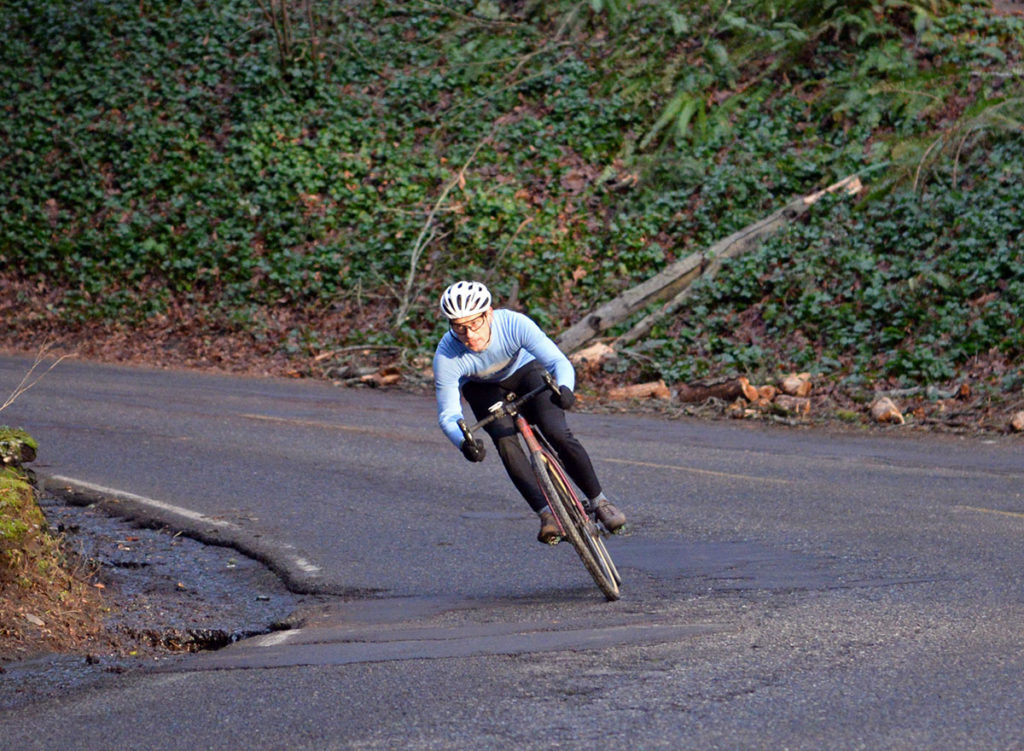
Rather than thinking of our dual-purpose knobbies as the opposite of slicks, it helps to visualize them as closely related to slicks, with just enough material cut away to improve traction in mud and snow, but not so much that the basic characteristics of the slicks are lost. In other words, our dual-purpose knobbies are the bicycle equivalent of Formula 1 wet-weather tires. The photo above shows our 700×42 mm Hurricane Ridge knobbies and illustrates the concept: A knobby that corners and rolls like a slick—until you need the knobs, at which point it becomes an aggressive knobby.
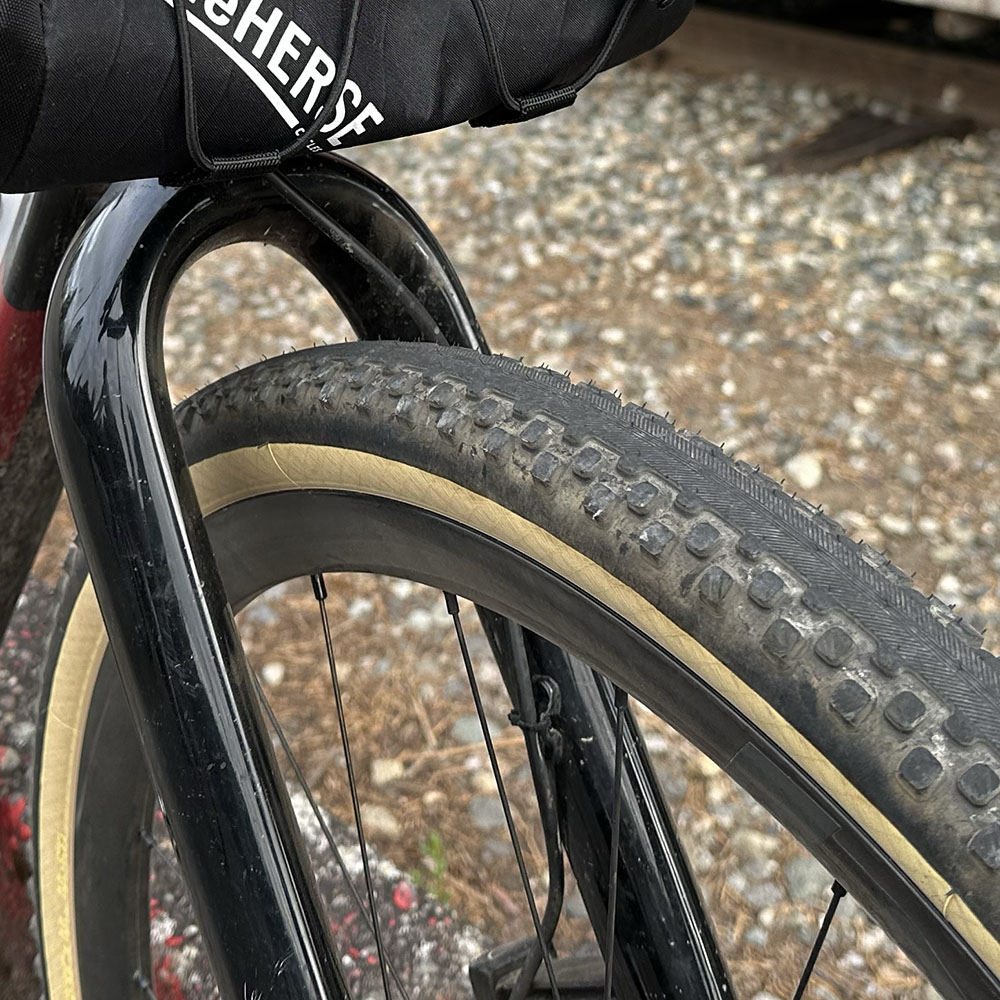
What happens if you put out more than 400 watts? Then even large knobs begin to squirm. That’s why we’ve developed our semi-slicks. In addition to a continuous center tread, they use a few tricks to stiffen the knobs further. The first row of knobs is anchored on the center tread, which makes those knobs even more resistant to flex. That’s important when you climb or sprint out of the saddle and rock the bike from side to side.
The side knobs are large and stiff, so they are also more efficient than smaller knobs (and also don’t flex during hard cornering). At the same time, the center tread is thin and supple for optimum speed. The tire profile is round to guarantee consistent and predictable cornering. It took 3 years of R&D to develop our semi-slicks, and we filed 3 patent applications to protect these innovative features that you won’t find on any other tire. As a result, our semi-slicks they combine the best of our slicks and our knobbies.
Summary:
- Rene Herse slicks: ideal for pavement, hardpack, dry gravel.
- Rene Herse knobbies: for rides where you may encounter mud, snow or loose gravel. You won’t lose speed on the paved portions of the ride, and you’re ready for anything the course may throw at you.
- Rene Herse semi-slicks: for rides and races with constant attacks, where you’ll put out more than 400 watts, yet still need the traction of knobs.
Further reading:
- Rene Herse tires
- Results of Bicycle Quarterly’s tire tests
- Our book The All-Road Bike Revolution explores how bicycles really work.
Photo credits: Pirelli & C. S.p.A (Photos 2, 3); Ansel Dickey (Photo 4); WTB (Photo 5).
Update 1/2025: This article has been updated to include Rene Herse semi-slick tires.


